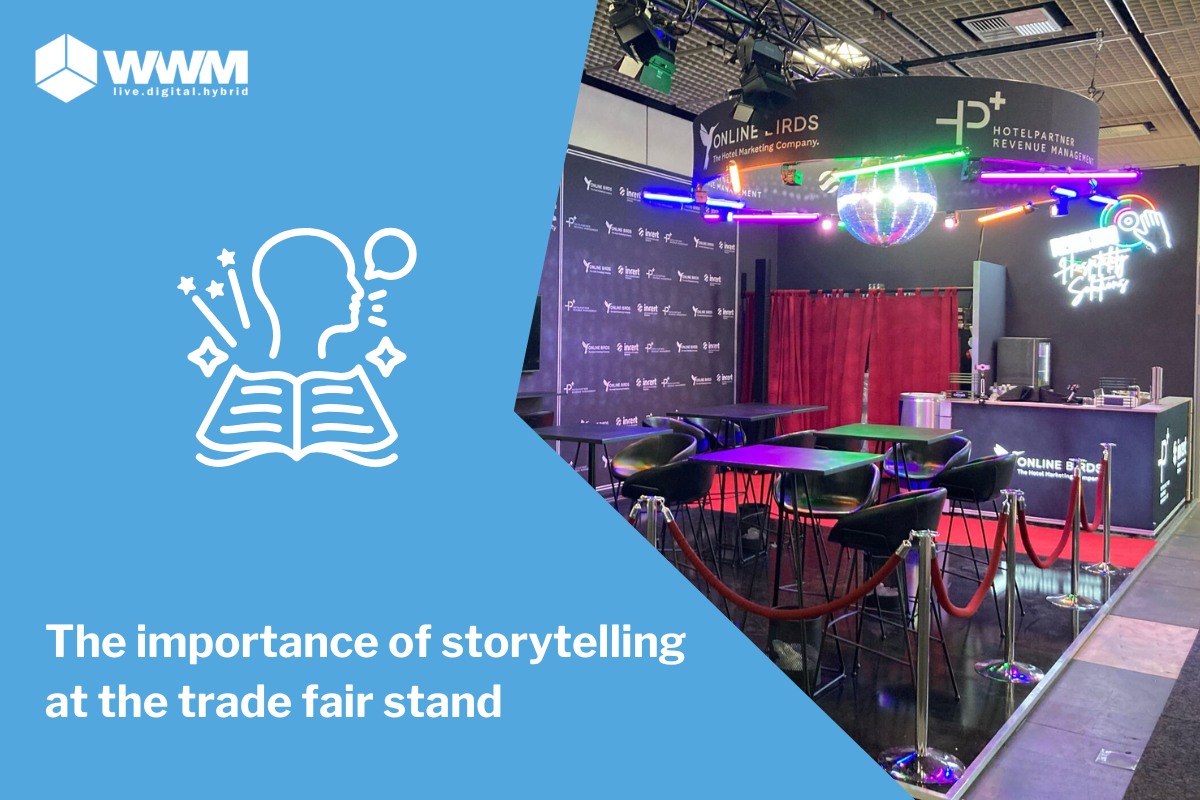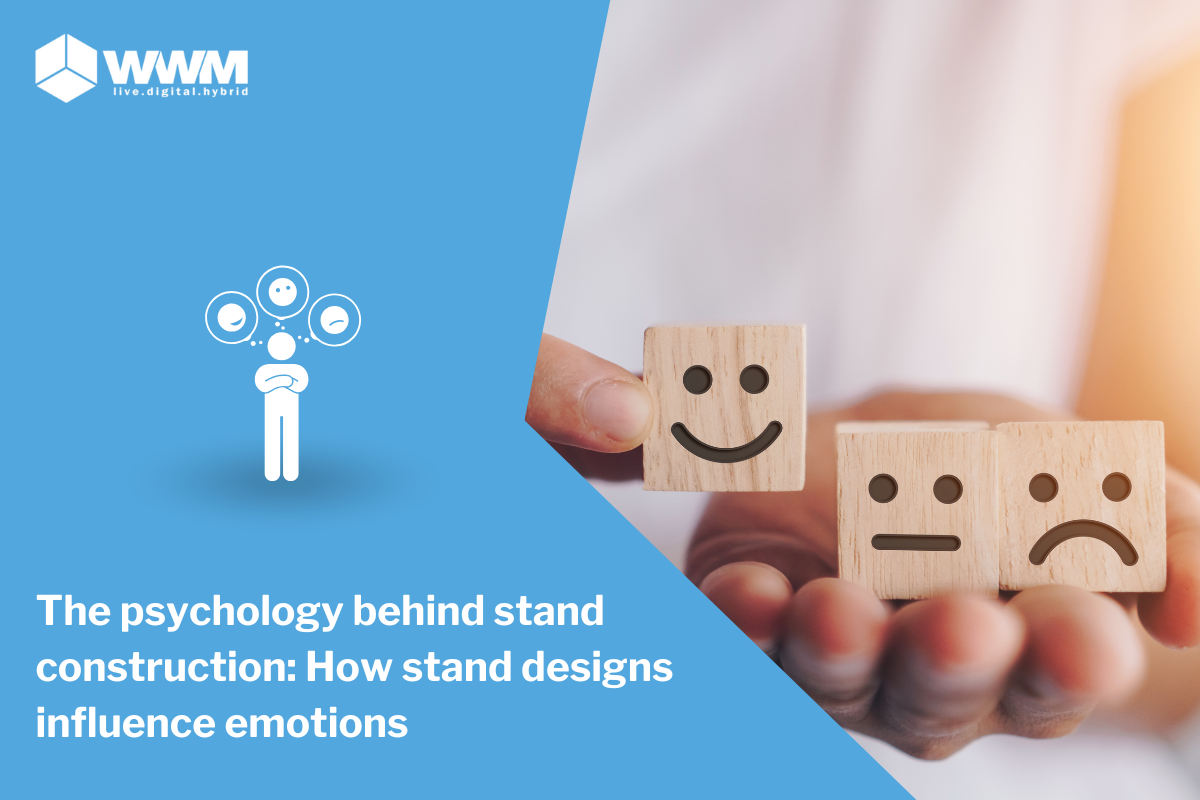10 tips for successfully planning individual exhibition stands
A customized exhibition stand is the key to standing out at trade fairs and events. A well-planned stand makes it possible to present products and...
4 min read
Maxima Matara
:
Friday, 6. September 2024

Storytelling is more than just a buzzword in marketing - it's a powerful strategy that enables brands to communicate with their target audience in an emotional and lasting way. Stories are deeply rooted in the human experience and help to convey complex messages in an understandable and memorable way. This doesn't just apply to digital campaigns or TV advertising. Especially at trade fairs, where brands and visitors interact directly with each other, effective storytelling can make all the difference. A well-designed trade fair stand not only tells the story of a brand, but also transforms the trade fair visit into an unforgettable experience and creates a lasting connection between the company and its audience.

The basis for a successful exhibition stand is well thought-out concept development that goes far beyond purely aesthetic design. It is about telling a story - the story of the brand, its values and its vision. This story should be tangible in the design of the trade fair stand, in the presentation of the products and in the interactions with visitors.
Identify the brand essence and values: What makes the brand unique? What values does it represent? These central elements should be the focus of the concept.
Design as a narrative medium: The colors, shapes, materials and layout of the trade fair stand should support the brand message. For example, a minimalist design can signal innovation and clarity, while an opulent stand emphasizes luxury and exclusivity.
Creating experiences: The exhibition stand should not only be informative, but also immersive. Visitors should have the feeling of being part of a story that appeals to them emotionally and makes a lasting impression.
A well-thought-out exhibition stand that focuses on storytelling requires precise planning and effective logistics in order to successfully implement the vision. The focus is not only on the aesthetic design, but also on the strategic organization that ensures the brand tells its story effectively and actively engages visitors.
The first step in planning a storytelling exhibition stand is to develop a clear concept that reflects the brand's values and vision. Such a concept should go far beyond purely aesthetic design and aim to tell a coherent story. Companies can benefit from the expertise of an exhibition stand construction partner who can help translate the brand identity into a unique and customized exhibition design. Choosing the right colors, shapes and materials can help create an emotional connection with visitors and reinforce the brand message.
You can find out more about the psychology of colors in our blog post: Colors in exhibition stand construction.
A well-thought-out concept alone is not enough - it needs to be brought to life through creative and interactive elements. Integrating modern technologies such as augmented reality (AR) or virtual reality (VR) can allow visitors to dive deeper into the brand's story. These technologies can help to present complex products in an understandable way or create an immersive experience that reinforces the brand image. Working with experienced stand builders can help companies make the most of these technologies and integrate them seamlessly into the overall concept.
You can find out more about interactivity and digital integration in our blog post: Technology in the exhibition stand.
Another important aspect of designing a successful trade fair stand is efficient planning and logistics. Software-supported systems such as ExpoCloud can provide valuable support here. Such platforms enable holistic planning and implementation of trade fair appearances - from concept development to realization and success monitoring. By using these systems, companies can ensure that all aspects of their trade fair presence are coordinated smoothly, saving time and resources.
At a time when sustainability is becoming increasingly important, an exhibition stand should also take ecological considerations into account. A well-thought-out trade fair presentation uses environmentally friendly materials and relies on sustainable practices to minimize the ecological footprint. An experienced exhibition stand construction partner can help to find the best solutions that are both environmentally friendly and economical. The result is a stand that not only impresses, but also uses resources responsibly.
After the event, it is important to analyze the success of the trade fair presence in order to make future improvements. By using modern analysis tools, companies can gain valuable insights into visitor engagement and evaluate the effectiveness of their storytelling strategy. This data makes it possible to make targeted adjustments and ensure that future exhibition stands are even more successful. A professional trade fair construction partner can help you interpret these findings and incorporate them into the planning of your next trade fair appearances.
You can find out more about the topic of data analysis in our blog post: The importance of data analysis for trade fair success.
Storytelling at the trade fair stand is far more than just a trend. It is an effective method of communicating brand values and messages in an authentic and memorable way. Through well thought-out concept development, the integration of interactive elements and a clear focus on the target group, companies can inspire trade fair visitors and create lasting connections. The trick is not just to present the brand, but to bring it to life - and take visitors on a journey they won't soon forget.

A customized exhibition stand is the key to standing out at trade fairs and events. A well-planned stand makes it possible to present products and...

Trade fairs are vibrant melting pots of commerce and innovation, where companies and customers meet in a dynamic environment. But what is often...

This is how the perfect trade fair stand should be. Large, a gigantic counter, a catering area, lots of LED video walls, bright colours. The main...